28-29 September 2018
Mother Armenia, all 70‘ of her with admirable superwoman biceps and stern composure, clasps a powerful 10′ broadsword. I suppose there is much symbolism that can be read into her presence: power, country, martyrs of war, victory in peace. I see a monumental female statue of stone warning that when people have lost patience with foolishness, they will find the strength to overcome. She may be saying, “Hey guys, fail to do what is right, you can be replaced!”
Mother Armenia already replace one guy who failed humanity. A monumental statue of Joseph Stalin, built in 1950, was a victory memorial for World War Two. It has since disappeared from Victory Park, within sight of a kiddie park and its giant ferris wheel. In 1962, 9 years after Stalin’s death, his statue was removed from this high pedestal and replaced by Mother Armenia. You go girl!
Yerevan, one of the most continuously inhabited cities of the world, is gearing up big time to celebrate her 2800th anniversary. There are various theories of from where the city’s name comes. In the late medieval and early modern periods, when Yerevan was under Turk and later Persian rule, the city was known in Persian as Iravân, a name still used by Azerbaijanis. The city was officially known as Erivan under Russian rule. Up until the mid-1970s the city’s name was most often spelled Erevan.
But my favorite origin for the name Yerevan is attributed to an expression exclaimed by Noah of Arc fame. After his big boat landed atop nearby Mount Ararat, with flood waters receding and land once again seen, Noah is believed to have exclaimed:
Yerevats! “It appears”
The history of Yerevan dates back to the 8th century BC, with the founding in 782 BC of the fortress of Erebuni, just southeast of downtown. The city acted as a religious center and royal capital of the ancient Armenian Kingdom. Much history and many armies have since passed through. Armies of the Iranians, Persians, Byzantines, Arabs, Mongols, Turks, Ottomans, Russians, Bolsheviks and Soviets. Some made return performances numerous times; some stayed longer than others. Great names played a part in Yerevan history, including Alexander the Great, Tamerlane, Sultan Murad IV and even the grandnephew of Napoleon.
Yerevan survived and prospered. Much of its expansion and prosperity can be attributed to the Soviet Union, or in spite of it, which transformed Yerevan from a provincial town within the Russian Empire to Armenia’s cultural, artistic, and industrial center.
However, following the breakup of the Soviet Union, independent Yerevan struggled with a chaotic transition. The city is rapidly transforming itself into a cosmopolitan capital with booming construction. Retail outlets, restaurants and cafés, which were rare during Soviet times, have multiplied. There are more pizza and karaoke joints but a serious lack of anything resembling an “old town,” and there is little of what I would term “historic atmosphere.” It seems like Anderson’s “The Emperor’s New Clothes.” One can build new structures and say they are modern, but the eyes see differently. Yerevan, as a whole, still looks like a Soviet town.
The current population of Yerevan is slightly more than 1.5 million, representing about 35% of Armenia’s total population. The architecture is mostly square and solid. What a city might create in glass and glitter is here built in massive blocks of pinkish or black stone. There is quite a contrast between the older streets and the modern new streets. It is also the only city I have ever seen that informed me it had “65,199 street lamps installed on 39,799 light posts.” I didn’t count the lights, but I did visit some interesting sites within sight of Mother Armenia and the ever looming snow-covered peak of Mount Ararat.
The Matenadaran or Museum of Medieval Armenian Culture displays a collection of over 16,000 ancient manuscripts covering such topics as philosophy, law, mathematics, medicine and geography. The illuminated manuscripts are lovely. Trivia question: when was the concept of numbers introduced to Armenia? Answer: not until the 16th century.
Into the early twentieth century, Armenia was divided into two sections: western Armenia was controlled by the Russians while eastern Armenia was under the control of the Ottomans. As is the usual case when a ruler’s power structure is threatened, Turkey needed a scapegoat. Christian Armenians were to become their target. Either they would become “Turkified” or be exterminated.
Ottomans and Kurdish tribes freely exercised a series of attacks and massacres against Armenian villages over the span of several years, beginning as early as 1891 with attacks and orchestrated massacres escalating throughout WWI. After World War I, Yerevan became the capital of the First Republic of Armenia as thousands of survivors of the Armenian Genocide arrived from the Ottoman Empire. For insight into this tragedy, we visited the Armenian Genocide Memorial and Museum.
On the eve of World War I, there were two million Armenians living in the territories of the Ottoman Empire. By 1922, eight years later, there were fewer than 400,000. The others were dead. Atop a hill above Yerevan stands a Memorial Spire, memorial wall, eternal flame, and museum all dedicated to those Armenian victims. Construction of the monument began under the Soviets after they witnessed over 100,000 people who took to the streets to commemorate the 50th anniversary of the genocide.
 The 144’ spire dramatically points to the sky and an eternal flame burns in the midst of 12 slabs, one for each of the 12 lost provinces that were usurped by Turkey. A 320’ wall contains the names of the towns and villages where massacres and deportations are known to have occurred. Names of those who came to the assistance of Armenian victims are also commemorated, like Pope Benedict XV. This site is probably more sacred to Armenians than its churches. Thousands upon thousands of Armenians attend memorial services here each year.
The 144’ spire dramatically points to the sky and an eternal flame burns in the midst of 12 slabs, one for each of the 12 lost provinces that were usurped by Turkey. A 320’ wall contains the names of the towns and villages where massacres and deportations are known to have occurred. Names of those who came to the assistance of Armenian victims are also commemorated, like Pope Benedict XV. This site is probably more sacred to Armenians than its churches. Thousands upon thousands of Armenians attend memorial services here each year.
The Genocide Museum, opened in 1995, overlooks the Ararat Valley. Exhibits successfully chronicle events during this period of history. This site is designed to memorialize the innocent victims of the first, (unfortunately not the last) genocide of the 20th century when an estimated 300K Armenians were massacred between 1894-1896. But far greater numbers, regardless of sex or age, were slaughtered during and after WW One. And few countries came to their aid. President Wilson’s League of Nations may have helped, but it was voted down by Congress. I wonder what the world would be like today had world leaders taken a less selfish course in history.
Unhindered, Russia handed over large sections of Armenian territory to Turkey. In fact, the entire country of modern day Armenia is only about 10% of its historical territory.
By understanding the Armenian Genocide perhaps other similar tragedies can be prevented. Truly, those who forget or choose to ignore the past are condemned to suffer its repetition!
An added Footnote:
I did not have time to read all the information while at the museum, so I took photos and read it after my return home. Reading this one particular placard, I could not help but recall the preparations for the 100th Anniversary of friendship between Azerbaijan and Turkey to be celebrated on September 15, the day after I left Baku. Soaring, colorful flags were being raised upon hotel buildings. It was explained that the flags, marching drills and drum beats were in preparation for a celebration commemorating Turkish assistance in ridding Azeris of the Russian yoke.
After reading this bit of history, I realize our Armenian’s friends may take a different view of all that celebratory activity.
“One of the aims of the Turkish intervention of 1918 to the east was the capture of Baku, rich in oil resources. Their advancement towards Baku was accompanied by massacres and looting of Armenians along the way. The Armenians reverted to organized resistance. After massacring the Armenian population of the Elisabethpol* and Baku governates, the Turkish forces and local Turkish-speaking population took Baku on September 15. It was accompanied with the massacre of about 30,000 Armenians. The population of Artsakh** organized efficient resistance to Turkish atrocities. Turkish soldiers worked out a new plan of large scale massacres against the population of Artsakh. The danger looming over the Eastern Armenian population, that it might share the fate of the Ottoman Armenians, was ended only with the defeat of the Ottoman Empire in World War I.”
(*Elisabethpol is today’s Ganja. **The disputed Nagorno-Karabakh territories)
 I am not a fan of brandy, unless mixed with a fine tawny port, but Yerevan’s Ararat Brandy Factory brings a welcome change of pace. Unfortunately, one must do a forced march through the “tour” where one hears little over the murmurs of disinterest. All are eager to just cut to the chase, pass the photos of George Clooney and John Malkovich, and head straight to the tasting room.
I am not a fan of brandy, unless mixed with a fine tawny port, but Yerevan’s Ararat Brandy Factory brings a welcome change of pace. Unfortunately, one must do a forced march through the “tour” where one hears little over the murmurs of disinterest. All are eager to just cut to the chase, pass the photos of George Clooney and John Malkovich, and head straight to the tasting room.
“Brandy” comes from the Dutch word “brandewijn” which means burnt wine. In the early 16th century, a Dutch trader created a way to ship more wine in his cargo space by evaporating water from the wine. He added the water back at his destination port in Holland. (The “discovery” of Port by the British came from the same need: a way to get a cherished product to market. Port came about when traders fortified wine with grape brandy as a way to maintain its quality during the long trip to Great Britain’s men’s clubs.)
Made all over the world, brandy is derived from distilled wine or fruit then aged in wood. Grape brandy is distilled from, you guessed right, the juice of grapes. Anything that will ferment can be distilled and turned into a brandy, from grapes or apples to sugar cane, honey, wheat, or potatoes. But, only the higher quality brandy made in the Cognac region of France can be called Cognac.
Ararat (ArArAt), is a brand of Armenian cognac-style brandy produced by the Yerevan Brandy Company since 1887. It is made from white grapes and spring water and aged between 3 to 30 years. The name Ararat is as well know for its quality brandy as is the mountain. My testing experience included a 3 and a 10 year brandy, neither of which changed my mind that brandy tastes similar to the chacha I drank yesterday.
Zvartnots Cathedral, literally celestial angels cathedral, is an architectural wonder upon approach. (I may be over-reacting after my 20th monastery visit.) This is a 7th-century cathedral built by the order of church patriarch Nerses the Builder. What is left standing after several invaders and centuries of time are the ruins of beautiful arches and columns. It doesn’t hurt the atmosphere when an ensemble sings classical music amid the columns with Mount Ararat as the backdrop.
Zvartnots (UNESCO) was built at a time when Armenia was being attacked by Muslim Arabs from Persia (Iran). Construction began in 643 and was located supposedly on the spot where a meeting between King Trdat III and Gregory the Illuminator took place. Nerses was to transfer the patriarchal palace to Zvartnots. The cathedral stood until the 10th century and the ruins of the patriarchal palace and winery were uncovered around 1901. The museum on site explains the complex and its construction.
An interesting trivia question: how many nuns in Armenia? Answer: only seven. A “wise” 5th century king decided women couldn’t be nuns as too many would join the church leaving less of a selection for the men.
 The circular church design featured Armenian Ionic columns and basket and eagle capitals, reliefs, mosaic ornamentation, and vine scroll friezes. There are ruins of the walls of numerous rooms, evidence of a winery (only men were allowed to crush grapes for the sacred wine because women couldn’t be nuns), and a throne room. Zvartnots was based on Armenia’s cross-winged, dome-type structures, traditionally a Greek cross. However, this cross is harmoniously fitted into a circle of columns. The columns soar spectacularly into a brilliant blue sky, though Mount Ararat is barely distinguishable through the haze. But what a spectacular location this must have been in Nerses’ day. Today, even in ruins, it is an awesome sight.
The circular church design featured Armenian Ionic columns and basket and eagle capitals, reliefs, mosaic ornamentation, and vine scroll friezes. There are ruins of the walls of numerous rooms, evidence of a winery (only men were allowed to crush grapes for the sacred wine because women couldn’t be nuns), and a throne room. Zvartnots was based on Armenia’s cross-winged, dome-type structures, traditionally a Greek cross. However, this cross is harmoniously fitted into a circle of columns. The columns soar spectacularly into a brilliant blue sky, though Mount Ararat is barely distinguishable through the haze. But what a spectacular location this must have been in Nerses’ day. Today, even in ruins, it is an awesome sight.
As my absolute final Caucasus church visitation, I explore Vagharushapat (UNESCO), the 4th largest city in Armenia. Echmiadzin was the official name, but after Armenian independence in 1995, the town was renamed Vagharshapat.
Vagharshapat has an ancient history dating to the neolithic period and has been inhabited since the 3rd century BC. After adopting Christianity as a state religion in 301, Vagharshapat became the spiritual center for all of Armenia and home to the Armenian Apostolic Church. Religion is important in Armenia and a site can’t get much more important then Vagharshapat.
The center of Vagharshapat is dominated by the Mother Cathedral of Holy Etchmiadzin, which is one of the oldest churches in the world and built upon a former pagan shrine. It was first built by Saint Gregory the Illuminator (thus referred to as St. Gregory’s) in 301–303, when Armenia had just adopted Christianity as a state religion. Legend says Saint Gregory had a vision of Jesus descending from heaven and striking the earth with a golden hammer to show where the cathedral should be built.
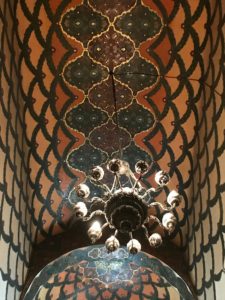 The church was enlarged in 480, 618 and 1658. Because of Armenia’s proximity to Persia, Turkey and Russia, it has seen its share of plunder over the centuries with the usual cycle of destruction and rebsuilding, including the Soviet’s efforts to eradicate religion. (The Soviet’s did issue a postage stamp depicting the cathedral in 1978.) Today, scaffolding dominates exteriors and interiors as a major restoration effort is in progress. Sadly, only tiny glimpses of the vaulted ceilings, bas-reliefs, and colorful floral and geometric frescos are visible.
The church was enlarged in 480, 618 and 1658. Because of Armenia’s proximity to Persia, Turkey and Russia, it has seen its share of plunder over the centuries with the usual cycle of destruction and rebsuilding, including the Soviet’s efforts to eradicate religion. (The Soviet’s did issue a postage stamp depicting the cathedral in 1978.) Today, scaffolding dominates exteriors and interiors as a major restoration effort is in progress. Sadly, only tiny glimpses of the vaulted ceilings, bas-reliefs, and colorful floral and geometric frescos are visible.
The sprawling complex is enclosed by 30’ walls and buildings. Other structures include the Pontifical Residence, monastery, baptistery, the Open Air Altar where the Pope came to help bridge the Armenian Apostolic/Catholic divide, a seminary, and treasury. Though the interior dome, apse, and beautiful ceilings are obstructed by scaffolds, manuscripts, jeweled crosses, chalices and other religious icons and holy relics are on view. Among its notable exhibits are the Holy Lance (Spear), relics belonging to Apostles of Jesus and John the Baptist, and a fragment of Noah’s Ark. Unfortunately, to see the holy spear I would need to visit the Metropolitan Museum in New York where it is on display.
A couple items of trivia: If you are a New Yorker and visit St. Vartan Cathedral, a relief of Etchmiadzin adorns one of its portals. Also, the cathedral is depicted on the 50,000 Armenian Dram, equivalent to about $100 US.
The biggest drawback to flying this far east is the early departure flight to return home. Mine is at 4:25 AM. I fly to Vienna for my flight west. Stay up or rise at 1AM? Have another farewell toast of Armenian Kilikia beer or go to bed early? Either way, not being a morning person, I will not enjoy the wee hours of dawn. Might as well have the beer. It really is quite good.
Life is good.
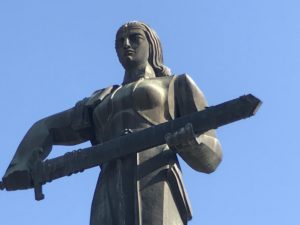

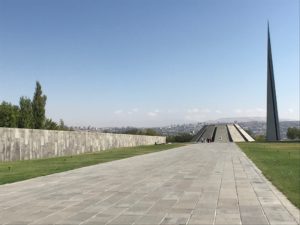
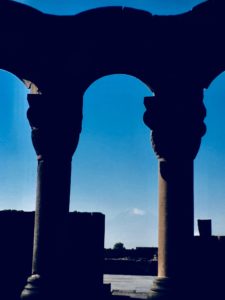

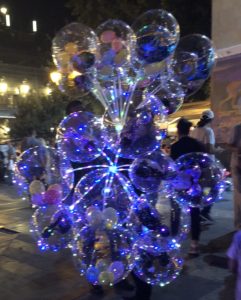
0 Comments